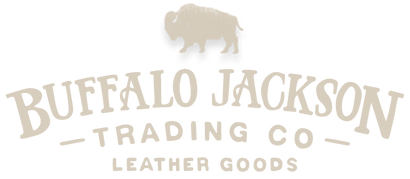Your Cart is Empty
You are €99,00 away from free shipping!
Your Cart is Empty
You are €99,00 away from free shipping!

Revised 9/24/2020
First things first: No, bonded leather is not real leather. Yes, it has real leather in it - but how much is questionable at best. Bonded leather is quite literally from the bottom of the barrel. Leftover scraps of leather are shredded and ground to a near pulp, then bonded together onto a fiber sheet using polyurethane or latex. The varying degree of actual leather in the mix (versus chemicals) affects the smell, texture, and durability of the product.
Here are 4 simple ways to tell the difference between real leather and bonded leather:
Real leather: It seems obvious, but read the tag or label. If it’s real leather, it will proudly say so. If you see “100% leather,” “full-grain leather,” “top grain leather,” or “genuine leather,” you’re headed in the right direction. (Learn more about the different types of leather).
Bonded leather: If the label doesn’t say anything at all about the material, it’s probably bonded leather (or even faux leather, which is completely synthetic). Full or top-grain leather and even genuine leather are always proudly noted, like in each description of our leather messenger bags. Also, check the price tag. We love a deal as much as the next guy, but real quality leather, particularly full-grain leather, is much more expensive to work with than bonded leather, so if the price seems too good to be true - it probably is.
Real leather: Look at the surface of the leather. Real leather is a natural material made from real animal skin. It's surface structure will not be completely uniform and will include blemishes and imperfections. (Hints of imperfections are a good sign in leather.) For example, full-grain leather is the highest grade of leather. It includes the full thickness of the skin, which is not sanded or buffed to remove natural marks or imperfections, as is seen in our suite of leather duffle bags. Top grain leather is a split layer that is sanded and given a finish coat, so it does not show as many imperfections as full-grain leather. Genuine leather is made from what remains after the top layers are split off for top grain leather. An artificial grain pattern is applied to the surface of genuine leather (also called corrected grain leather), which is uniform in appearance and will be harder to distinguish from bonded leather.
Bonded leather: The surface of bonded leather is uniform because it gets resurfaced and imprinted by a machine (usually to mimic the grain of higher quality leather - so watch out). A very regular, even texture pattern is a sign that it’s a machine-made piece. As mentioned above, this may be difficult to distinguish from genuine leather, but the difference should be more apparent when compared to full or top grain leather.
Real leather: Remember again, real leather is a natural material. So, when you run your fingers across it, it doesn’t feel perfectly smooth. Press your finger into the leather - the surface will stretch and wrinkle a bit, like skin. This is especially true of full-grain leather, and may also be noticed in top grain leather. Genuine leather may not pass this test.
Bonded leather: When you run your fingers across bonded leather, it feels cold and unnaturally even. Also, when you press your finger into the surface, it doesn’t act like skin. Rather than stretching or wrinkling, the bonded leather simply depresses under your finger while still retaining its shape.
Real leather: If you’ve smelled real leather before, you know it has a distinctive “leathery” smell - it has a natural, organic, skin scent that cannot be accurately manufactured.
Bonded leather: There is no reliable way to fake the smell of real quality leather. Because it’s just the pulp of leather scraps mixed with chemicals, bonded leather will have varying degrees of a plasticky, chemical odor (if any odor at all).
Suffice it to say, if you want real leather, you don’t want bonded leather. And if you want real, quality leather, you probably don’t want “genuine leather” either. (Okay, if you’re buying a leather-bound Bible, it’s probably bonded leather—that’s not a big deal. God will forgive you.) But, when you're buying a leather briefcase or leather jacket, be sure you know what you're getting.
Orders shipped to Canada may be subject to import duties, tariffs, and taxes charged by Canadian customs. These fees are not included in our prices or shipping costs. You will be responsible for any additional charges upon delivery. Please review local customs regulations before placing your order.

